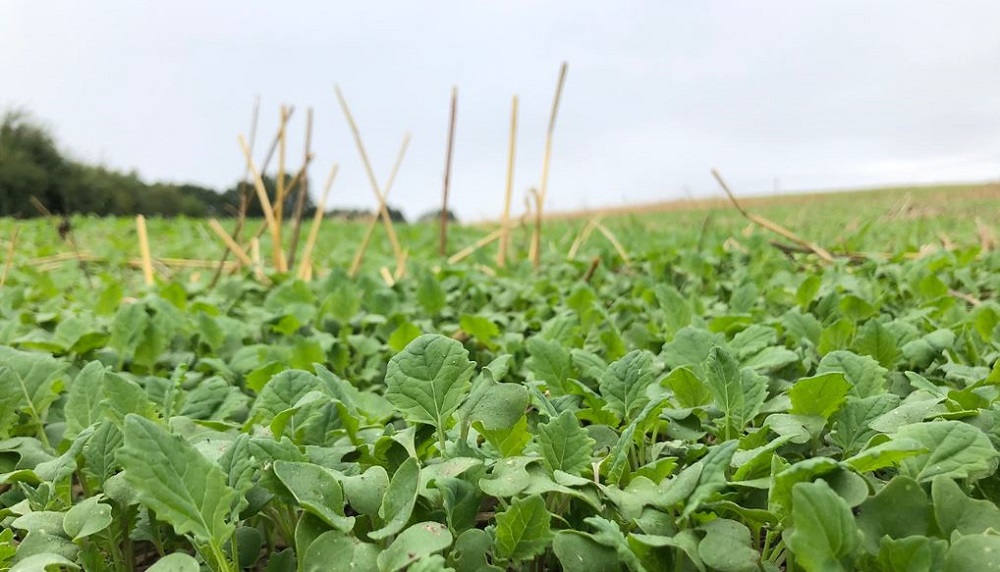How to trap a cabbage stem flea beetle
Friday, 9 August 2024
Sacha White is back with more tips on protecting winter oilseed rape from cabbage stem flea beetle (CSFB). This time, the topic is trap crops.
What is a trap crop?
A trap crop is simply more attractive to a target pest than the crop you are trying to protect.
For example, there is good evidence that turnip rape can reduce CSFB larvae in winter oilseed rape if it is grown close to it (such as in a border). Of course, this requires more work at a busy time and takes up precious land.
There is an option that requires much less management, with no requirement to purchase/sow additional seed or tie up land. You simply need to hold off controlling volunteer oilseed rape.
As cabbage stem flea beetles look to alight on a juicy crop, they sense and home in on plant volatiles called isothiocyanates (glucosinolate breakdown products). If your field is densely populated with volunteer oilseed rape it will give off a relatively big cloud of these volatiles (compared to recently drilled oilseed rape in a nearby field). It acts as a beetle magnet during migration.
If the trap crop is left for several weeks, it capitalises on a further quirk of CSFB biology. Beetles gradually lose their wing muscles, severely limiting their escape options when the volunteers are eventually destroyed.
Testing the trap
Evidence of the effect of a volunteer oilseed rape trap crop was captured as part of an ADAS-led project (see AHDB final project report 623), which included trials on six farms.
Each farm tested the impact of early (in August or early September) and late (mid-September to October) control of volunteers on CSFB pressures in adjacent winter oilseed rape crops (with the specific control dates set to suit the trial site).
When the volunteer trap crop was controlled later, it reduced CSFB pressure in the adjacent winter oilseed rape crop at four farms – up to 88% fewer adults, up to 76% less leaf area lost and up to 69% fewer larvae. All this was achieved simply by doing nothing for a few weeks.
When volunteers are destroyed, any eggs or larvae on them also die, meaning fewer critters next summer too.
At one of the two farms where no benefit was seen, the host farmer removed all but 2 ha of the volunteers much earlier than planned. At the other, all were removed in mid-September. This suggests that relatively small areas of volunteers may not be powerful enough to attract the pest and that it may be best to leave volunteers until at least late September so that the bulk of CSFB migration has passed.
Naturally, the approach will need to fit in with the wider farm management plan (e.g. impact on black-grass control), but trap crops do appear to be a useful layer in the integrated approach to CSFB management.
Integrated approach
A lack of effective chemical options has made this beetle pest enemy number one in winter oilseed rape. Its management relies on layering a developing, variable and complex set of alternative solutions.
This is the second in a series of CSFB IPM articles, which aims to provide you with a solid foundation for experimentation at the farm level to help you grow oilseed rape with more confidence.
As with all cultural approaches, control can vary. Please let us know about your experiences so we can build the best understanding of all interventions.
How sowing dates and companion crops can help tackle CSFB (first article)
 AHDB
AHDB


